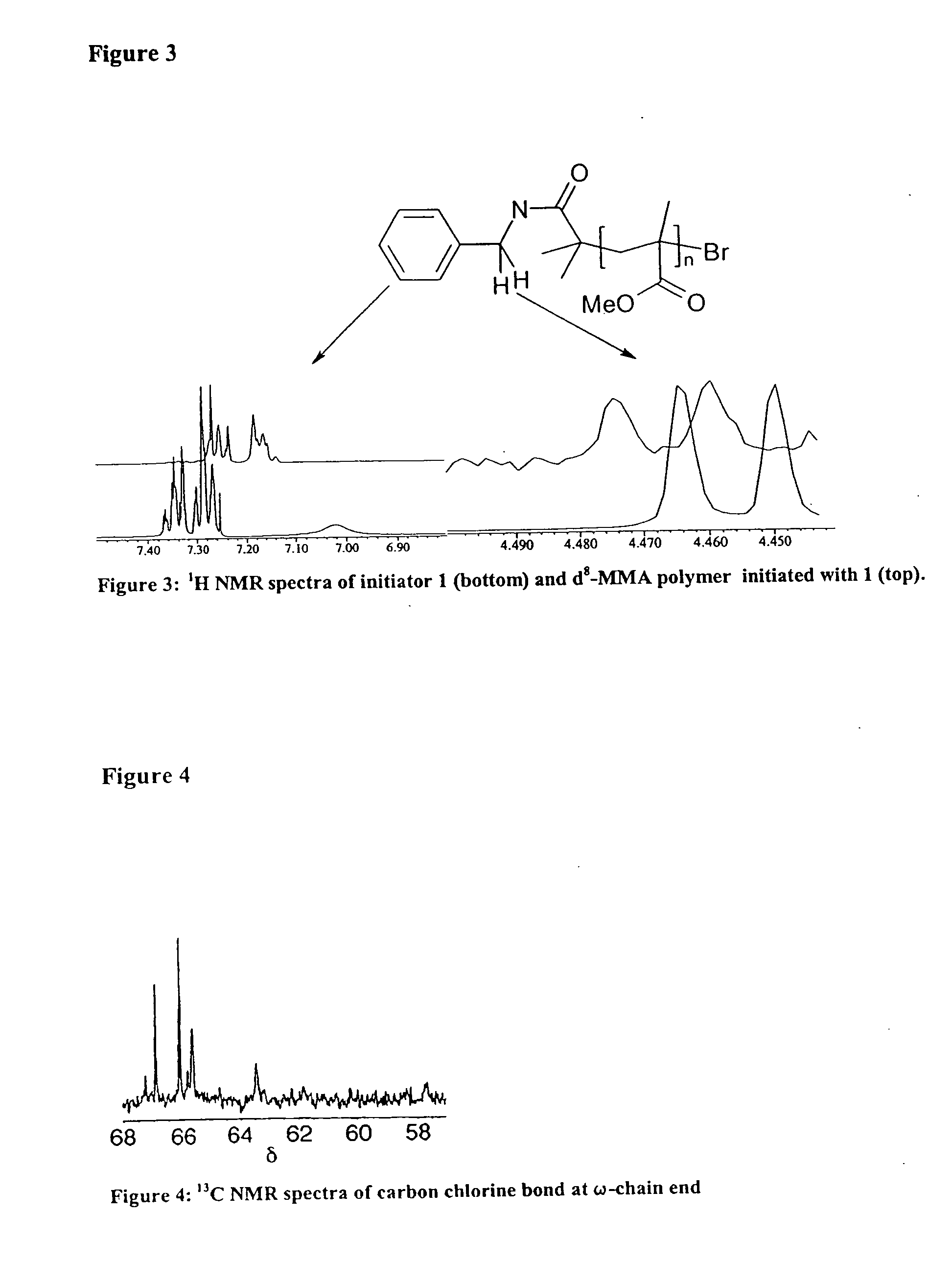Amide initiators
a technology of initiators and amides, which is applied in the field of initiators of amides, can solve the problems of amide initiators that are difficult to be effectively used, and cannot be determined the molecular weight properties of the polymer produced, and the initiators of amides, as indicated above, are difficult to exploi
- Summary
- Abstract
- Description
- Claims
- Application Information
AI Technical Summary
Benefits of technology
Problems solved by technology
Method used
Image
Examples
Embodiment Construction
[0020] A first aspect of the invention provides a transition metal living free radical and / or atom transfer polymerisation process comprising the steps of: [0021] (a) mixing (i) a transition metal living free radical and / or atom transfer radical catalyst, (ii) a plurality of polymerisable monomers, and (iii) an initiator comprising a transferable atom or group α to an amide group to form a mixture; [0022] (b) incubating the mixture at a first temperature; and then [0023] (c) raising the temperature of the mixture to a second, higher, temperature to allow polymerisation of the monomers to proceed to produce polymer.
[0024] That is, the transferable atom or group is usually attached to a carbon atom α to an amide group.
[0025] Transition metal living free radical catalysts and / or atom transfer radical catalysts are themselves well known in the art. Suitable catalysts are disclosed, for example, in WO 96 / 30421, WO 97 / 18247, WO 97 / 47661, WO 98 / 01480 and WO 01 / 94424, incorporated herein ...
PUM
| Property | Measurement | Unit |
|---|---|---|
| temperature | aaaaa | aaaaa |
| temperature | aaaaa | aaaaa |
| temperature | aaaaa | aaaaa |
Abstract
Description
Claims
Application Information
 Login to View More
Login to View More - R&D
- Intellectual Property
- Life Sciences
- Materials
- Tech Scout
- Unparalleled Data Quality
- Higher Quality Content
- 60% Fewer Hallucinations
Browse by: Latest US Patents, China's latest patents, Technical Efficacy Thesaurus, Application Domain, Technology Topic, Popular Technical Reports.
© 2025 PatSnap. All rights reserved.Legal|Privacy policy|Modern Slavery Act Transparency Statement|Sitemap|About US| Contact US: help@patsnap.com



